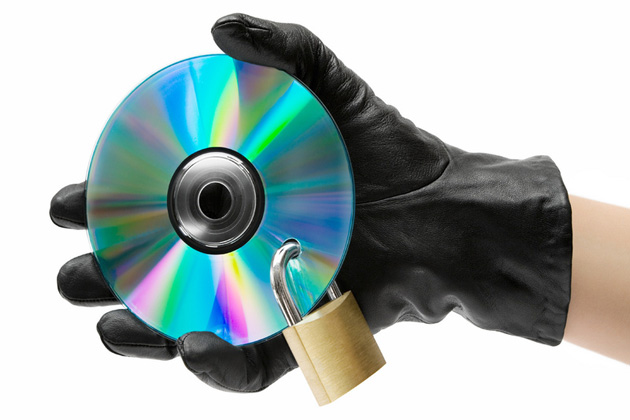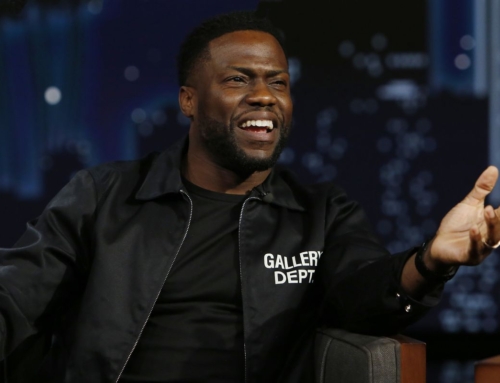 Will.i.am is, perhaps, the most repugnant person in the modern EDM cannon – even more so than David Guetta, whom the Black Eyed Peas rapper introduced to this side of the Atlantic. Bad lyrics supported by clichéd house beats and an undeserved spot on Billboard’s Dance/Electronic Songs Chart give EDM negative connotations – but they’re far less of an offense than stealing another artist’s music.
Will.i.am is, perhaps, the most repugnant person in the modern EDM cannon – even more so than David Guetta, whom the Black Eyed Peas rapper introduced to this side of the Atlantic. Bad lyrics supported by clichéd house beats and an undeserved spot on Billboard’s Dance/Electronic Songs Chart give EDM negative connotations – but they’re far less of an offense than stealing another artist’s music.
If you haven’t been reading the gossip blogs for the past few weeks, here’s a recap. Will.i.am’s latest solo album #willpower (see, he’s so EDM his album title nods to social media!) included a song called “Let’s Go,” with Chris Brown on vocals. The instrumentation, however, came from a track Russian DJ Arty and Mat Zo recorded in 2011 called “Rebound” and put out on Anjunabeats. A video comparing the two surfaced on Youtube.com.
Will.i.am, in doing damage control, told the Associated Press he credited Arty in the linear notes (Mat Zo didn’t receive such a distinction). “You can’t steal if you credited somebody,” Will.i.am stated. “He and I communicated. … It’s not my fault he didn’t tell me about the other guy. So who is to blame? I didn’t know.”
He went onto explain: “I respect that world and in a way helped cross it over for it to be played on radio. So it’s just – it’s just – it’s kind of wack the way this situation has turned out because it’s undermined in a way – not really, it hasn’t – but it’s undermined my contributions to that world and my respect to that world. Because the way they’re painting it is not the way it is.”
The “Let’s Go”/“Rebound” similarities are being reviewed by the labels’ legal teams. However, on May 2, Anjunabeats released the following statement:
“Anjunabeats is the record label behind Arty and Mat Zo and owns the master recording rights to their collaboration ‘Rebound.’ Mat Zo and Arty have been important members of the Anjunabeats family for a number of years and ‘Rebound’ was one of the label’s most popular releases in 2011.
“As has been widely reported, a large section of ‘Rebound’ was sampled on Will.i.am’s track ‘Let’s Go featuring Chris Brown’ and this took place without the permission of Anjunabeats or Arty & Mat Zo.
“Although Arty (but not Mat Zo) was credited in the sleeve notes, this is not the same as obtaining permission. To present someone else’s work as your own, you need to seek permission, agree terms and file paperwork, which has not happened in this case.
“We’ve remained silent on this issue until now but as a record label it is our obligation to protect our artists’ interests and we felt it was necessary to respond to some of the inaccuracies that have been reported following Will.i.am’s recent comments to Associated Press.”
Message to Will.i.am: Get your legal team ready. You’re going to need it, badly.
A Decades-Long Problem Not Just in Pop
Unfortunately, this instance highlights the too-common occurrences of bigger artists borrowing from perceived lesser ones. Cracked.com and Guyism.com have fairly lengthy lists of artists who liberally borrowed from others and were sued – the most notable being occasional dance music darling Madonna, whose “Justify My Love” bears semblance to Public Enemy’s “Security of the First World” and didn’t credit songwriter Ingrid Chavez. In total, her career has been through 15 plagiarism lawsuits, among countless more. The most startling? The main lyric from “Like a Virgin” was borrowed.
A piece by Richard Brophy for Resident Advisor points out that dance and electronic artists have had their music stolen or missed out on adequate compensation since the early Chicago and Detroit scenes – in fact, Larry Heard is rumored to have only received $250 from “Can You Feel It?”
 Perhaps the most recent high-profile case of an artist being (nearly) cheated was a pre-“Levels” Avicii. Back in 2011, label Ministry of Sound shopped around his instrumental track “Penguin” in search of a vocal line. A track called “Collide” came back to the producer born Tim Bergling and manager Ash Pournouri, who rejected it. Simon Cowell’s label Syco, on the other hand, picked up “Collide,” Avicii’s instrumentation and all, and gave it to Leona Lewis. Meanwhile, “Penguin,” with another vocal line, became “Fade into Darkness.”
Perhaps the most recent high-profile case of an artist being (nearly) cheated was a pre-“Levels” Avicii. Back in 2011, label Ministry of Sound shopped around his instrumental track “Penguin” in search of a vocal line. A track called “Collide” came back to the producer born Tim Bergling and manager Ash Pournouri, who rejected it. Simon Cowell’s label Syco, on the other hand, picked up “Collide,” Avicii’s instrumentation and all, and gave it to Leona Lewis. Meanwhile, “Penguin,” with another vocal line, became “Fade into Darkness.”
“Collide” eventually ended up on the radio, and the tracks’ similarities resulted in a lawsuit against Lewis and Syco, who had sampled “Penguin” without Ministry of Sound’s permission. Before all parties ended up in court, Syco released a statement, agreeing to credit Bergling and including him as a featured artist.
Nevertheless, because of frequent samples in electronic music, “borrowing” continues to happen on a lesser level. As Brophy pointed out in his piece, the advent of digital technology has proliferated plagiarism, and within the electronic music sphere, some of the more high-profile instances have involved DJ Hell and Felix da Housecat over work with P Diddy in the early aughts and Funk D’Void’s 2003 track “Emotional Contact.”
Much like the two instances above, Funk D’Void took a piano line from an “unknown” – in this case, Italo house producer Chicco Secci – thinking he wouldn’t get caught. The track eventually ended up on one of Sven Vath’s Cocoon compilations, but considering how tight-knit the electronic music community can be, Secci found out.
“I wasn’t even thinking about it: I sample all the time so it was a big wake-up call when finally I got caught out!” Funk D’Void said to Resident Advisor. “The reason there was all this hoopla was because he’s a mate of Pete Tong and it got out it into the press, which I’m sure didn’t harm sales.”
Now that EDM has a rising profile, sample clearance has turned into a far more serious issue. Take Baauer’s “Harlem Shake.” A year ago, it was nothing more than a trap track out on a Mad Decent sub-label; the viral sensation around it and the Billboard 200’s new inclusion of Youtube plays took “Harlem Shake” to the top. And, at that point, not only did two artists who Baauer sampled take notice, but Diplo and Mad Decent were faced with a conundrum.
As the New York Times detailed in March, Hector Delgado, a former reggaeton artist who says the “con los terroristos” bit, and Jayson Musson, a Philadelphia-based rapper who was part of Plastic Little, a rap group that did the “Do the Harlem shake” line in a 2001 song called “Miller Time,” heard the track and realized they weren’t being compensated. Baauer’s defense? “The dude in the beginning I got off the Internet, I don’t even know where.”
Diplo echoed similar sentiments in a Huffington Post interview: “We didn’t know there were any samples in the song to begin with. But when it came to clear the samples – because otherwise he would make negative money – we wanted to help him out.”
An agreement has since been reached between Mad Decent, Delgado, and Musson.

Unfortunately, Funk D’Void’s slipping under the radar and Baauer’s “I don’t know” defense are extremely common when it comes to sampling in electronic dance music. In MakeItInMusic.com, a former music lawyer details the liberal sampling without clearance that went on in the underground days of the early 1990s. For such artists, sample clearance was (and still is) too expensive, and because less than a thousand recordings would sell, few noticed.
However, as this lawyer points out, the few cases that end up in court can be career killers – not only for the type of plagiarism blemish created but because the expenses end up being more than what the track makes.
The Basics of Sample Clearance
Because EDM’s profile continues to grow, and as more pop stars like Will.i.am and Leona Lewis include a house-inspired backing track that may or may not have already been recorded, it seems about right to talk about sample clearance.
When an artist plans to use part of a track already recorded, he and his label require two clearances: the copyright from the owner, typically the music publisher, and from the owner of the master tapes – usually a record company but may become an artist if the label folds. Publishers, such as BMI and ASCAP, can be found through performing rights organizations or even these days online.
While the artist is advised to contact the publisher for clearance, publishers themselves may have policies prohibiting permission for samples or, if the artist is not signed or is on an obscure label, may reject the request unless an upfront fee is paid.
 Understand, too, that not getting permission is considered copyright infringement in multiple regards: a breach of copyright in the original sound recording and in the underlying music and lyrics. Additionally, using borrowed music without proper clearance is considered unauthorized use of one or more performances in the original and may violate the artist’s moral rights if he or she objects to how the sample is used or is credited. Along with this, the original artist doesn’t receive any royalties.
Understand, too, that not getting permission is considered copyright infringement in multiple regards: a breach of copyright in the original sound recording and in the underlying music and lyrics. Additionally, using borrowed music without proper clearance is considered unauthorized use of one or more performances in the original and may violate the artist’s moral rights if he or she objects to how the sample is used or is credited. Along with this, the original artist doesn’t receive any royalties.
It’s not always clear cut when sample clearance is needed. As Nolo.com points out, the process is essential if the artist plans to make and distribute copies to the public; it’s not necessary, however, if the recording is only for personal use, for use only in live shows, or if the sample can’t be quickly recognized.
This last point, however, is highly disputed. While Nolo.com claims it isn’t essential, SoundOnSound.com states an artist must get clearance before the sample is altered. Legalities, as well, vary from country to country.
The U.S. has what’s called Fair Use, essentially a vague area in which an artist has a right to copy part of a copyrighted work without permission. Instances can be if the only a small portion of the track was taken, if the artist transformed the sample beyond recognition, and if the sample use does not cause harm to the owner. Again, Fair Use is a gray area, and in using this defense, artists need to proceed at their own risk.
Ultimately, though, Will.i.am can’t use this latter defense, considering the nearly identical instrumentation and structure between the two tracks, and with Anjunabeats’ statement, we’ll all simply have to wait and see how the case pans out.





